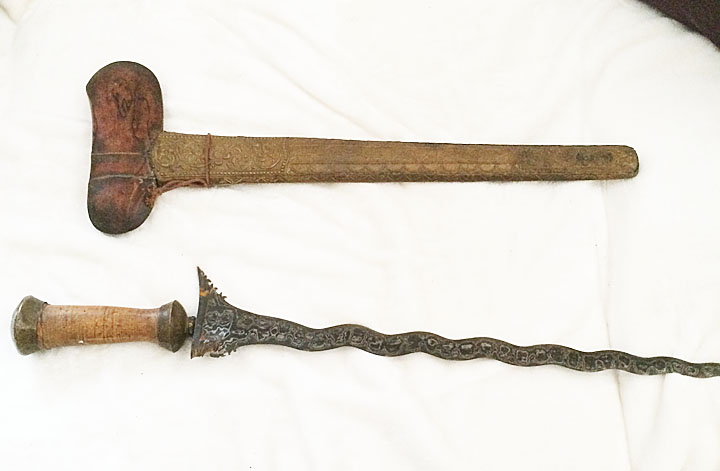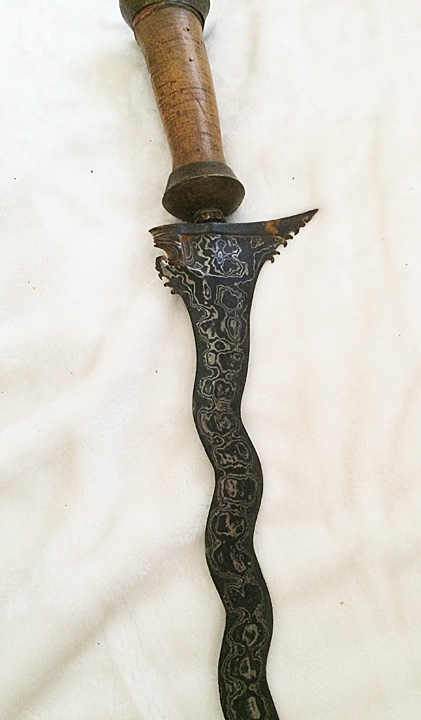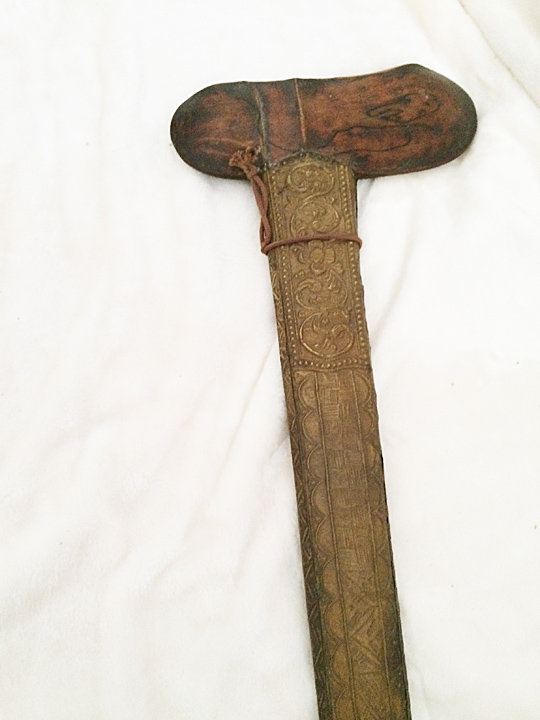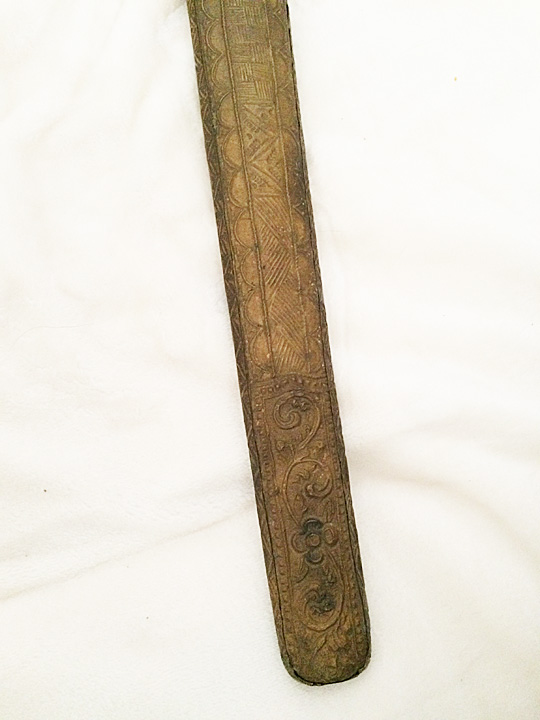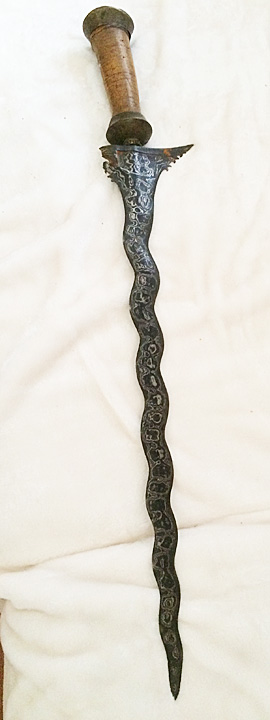Posts: 30 Location: Southern Ontario, Canada
Fri 03 Oct, 2014 5:48 am
Is this an antique Kris, or one that is relatively new?
Posts: 7
Fri 03 Oct, 2014 7:36 am
It 's not new reproduction. But my knowledge on this topic is quite slim.
Beside this forum, you may also find answer on
http://www.vikingsword.com/vb/forumdisplay.php?f=11 too.
Posts: 2,294 Location: East backwoods-assed Texas
Fri 03 Oct, 2014 9:18 am
If I had to say....I would call it a genuine antique. If it is modern-made..........it's a darn fine job of antiquing , and I give great homage to the maker. :D ...........McM
Posts: 208 Location: Massachusetts, USA
Fri 03 Oct, 2014 11:38 am
My best guess from the pictures would be the blade is modern. Traditionally made kris are made with poor quality metal that must be folded repeatedly to be good enough for a blade, and is still bad quality compared to modern monosteel or the folded steel that Japanese smiths produce. Combined with the incredibly humid southeast asian climate, old kris blades kept anywhere other than highly protective environments with constant upkeep corrode and literally delaminate rapidly.
However, many craftsmen who make kris blades reuse old or antique handles and scabbards. Looking closely at the pictures, the handle itself might be made of stacked leather, which I believe is a modern technique. That doesn't rule out the possibility of the metal fittings and scabbard being older.
Co-incidentally, I was travelling in Malaysia less than a year ago, and saw places where traditional kris blades were being sold. My feeling is that local craftsmen tend not to go for "intentional aging" as an aesthetic effect or for deceptive purposes, of course that may not be true for the agents who sell them to ebay or bring them to the US as "antiques". Other than that, traditional kris are not particularly interesting to me either as practical blades or martial weapons, not being particularly good for either purpose, and I'm not a native malay so keeping one for luck doesn't make sense. And also Singapore explicitly bans transporting kris through their airport, even in checked luggage.
Finally, a word of warning. Traditional kris, and probably yours, most often have a thin, rat-tail tang that is little more than glued into the handle. Combined with low quality folded metal, this creates a weak point at the handle juncture which is prone to breakage, so it is highly inadvisable to attempt to practice cut or even swing around such a blade.
Posts: 7
Fri 03 Oct, 2014 12:11 pm
Keris s' hilts are generally left loose. So, the owner may rotate it around or even replace it with nicer one. Traditionally, no adhesive in the hilt, only some cloth piece or organic material around rat tail tang. So, swing her around could be dangerous.
This is thrust weapon, do not expect her to perform cut.
Posts: 104
Fri 03 Oct, 2014 11:47 pm
The steel quality of that blade looks much, much higher than most kris I have seen. I should put up a pic of mine.
The blade of yours looks fantastic. Authentic antique or not, I think it's a keeper.
Posts: 30 Location: Southern Ontario, Canada
Sat 04 Oct, 2014 8:35 pm
Thanks for the information folks. I agree, that blade IS pretty nice. I'll tell the owner what I have learned about it here.
Thanks again!
Posts: 2,698 Location: Indonesia
Mon 06 Oct, 2014 5:00 am
All I can say is that it doesn't look Javanese or Balinese -- or if it originally came from these regions, it must have been rehilted outside Java/Bali since the size or shape of the grip is completely unlike the knob-ended all-wood grips I'd expect to find in a Javanese/Balinese keris. The blade, however, does look Javanese, and the sheath is a gayaman variety I'd normally expect to see from Bali or far Eastern Java. My best guess is that it has been rehilted in the West.
You
cannot post new topics in this forum
You
cannot reply to topics in this forum
You
cannot edit your posts in this forum
You
cannot delete your posts in this forum
You
cannot vote in polls in this forum
You
cannot attach files in this forum
You
can download files in this forum
